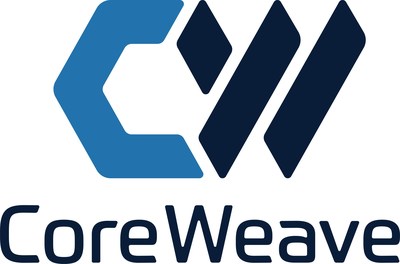In an era when artificial intelligence dominates headlines and reshapes entire industries, one company has decided to sprint while others are still calibrating their stride. CoreWeave Inc., the fast-rising cloud infrastructure firm backed by NVIDIA, is committing to one of the most aggressive capital expenditure plans in recent tech history—$23 billion in 2025 alone.
At the heart of this ambition lies a single bet: that the AI revolution won’t slow down anytime soon. But while the company builds for an accelerated future, Wall Street is nervously glancing at the balance sheet.
The High Cost of Scaling the Future
CoreWeave, which only went public in March 2025, is pouring tens of billions into high-performance data centers packed with the latest NVIDIA GPUs. These facilities are the engines powering generative AI—tools developed by partners like OpenAI and Microsoft, both of whom rely on CoreWeave’s infrastructure to train and deploy next-gen models.
But the size of the investment raised eyebrows. Analysts had expected capital spending around $18 billion. CoreWeave blew past that projection by up to $5 billion. While demand from clients is real and growing, many question whether the company is scaling too fast—borrowing too much, too soon.
Chief Financial Officer Nitin Agrawal defended the plan during the earnings call, citing “fundamentally increased customer demand.” But investor reaction was mixed. Shares initially jumped 11% on strong Q1 revenue but reversed course, dropping over 5% the following day and settling lower into the week.
The Debt Dilemma
The numbers behind the story are staggering. CoreWeave is now sitting on $12 billion in debt, with interest expenses hitting $264 million in just the first quarter of 2025. That figure alone is larger than the entire quarterly revenue of many mid-cap tech firms.
And while revenue has skyrocketed—up 420% year-over-year—the company is still deeply unprofitable, with an adjusted net loss of $150 million, far worse than analysts expected.
Gil Luria, analyst at D.A. Davidson, cut his rating on CoreWeave to “Underperform,” warning that the company may be “borrowing at extraordinarily high interest rates to buy a product that rapidly depreciates”—referring to the GPUs that power its operations. It’s a classic tech conundrum: exponential innovation, but with exponential costs.
Big Clients, Bigger Expectations
Still, CoreWeave’s customer list reads like a who’s who of AI’s elite. Microsoft accounts for nearly three-quarters of its revenue, much of which flows through to OpenAI, which itself just inked a new $4 billion deal with CoreWeave to expand cloud capacity.
The company also teased a new “hyperscaler” client, with analysts speculating that Google (Alphabet) may be entering the picture. If true, it would mark a significant diversification beyond Microsoft and offer some breathing room for investors concerned about customer concentration.
These deals are not only substantial—they’re strategic. With tech giants battling to build faster, smarter, more accessible AI platforms, CoreWeave has positioned itself as the behind-the-scenes powerhouse. It’s the digital scaffolding holding up AI’s cathedral.
A High-Wire Act for Wall Street
CoreWeave’s stock has soared more than 68% since its IPO, and major brokerages are bullish, setting price targets between $50 and $80. NVIDIA’s own early investment—worth roughly $1.7 billion—only adds fuel to the fire.
But bullish momentum can’t mask structural risk. CoreWeave is a company riding the crest of an AI tidal wave, but also one betting its future on speed, scale, and credit. It’s borrowing heavily to expand infrastructure for clients whose long-term needs and loyalties could shift with a single product cycle or cost-benefit analysis.
Some analysts describe CoreWeave as “overflow capacity” for Microsoft—a helpful partner, but not necessarily a permanent one.
Vision vs. Vulnerability
What CoreWeave represents in 2025 is more than just another growth story—it’s a litmus test for how far capital markets are willing to stretch in pursuit of AI dominance.
If the AI boom continues on its current trajectory, CoreWeave could emerge as a critical piece of the digital backbone powering everything from consumer apps to enterprise platforms. But if interest rates rise, demand slows, or competitors like Google Cloud and Amazon ramp up alternative capacity, the company could find itself overextended in a market that punishes excess.
The next few quarters won’t just measure profits. They’ll measure patience, conviction, and risk tolerance—both from CoreWeave’s leadership and from the investors betting on its promise.
Conclusion: Betting Big on the Invisible Infrastructure of AI
In many ways, CoreWeave is the embodiment of the modern tech economy: invisible, indispensable, and built on breathtaking speed. Its rise reflects the insatiable appetite for AI compute—and the willingness of capital to chase it.
But as history has often shown, vision needs more than velocity. It needs endurance, discipline, and above all, the ability to deliver under pressure. Whether CoreWeave becomes the AWS of AI or the cautionary tale of a gold rush gone too fast remains one of 2025’s most compelling business stories.
by Steve Macalbry
Senior Editor,
BestGrowthStocks.Com
Disclaimer: The author of this article is not a licensed financial advisor. This article is intended for informational purposes only. It should not be considered financial or investment advice. We have not been compensated for the creation or distribution of this article and we do not hold any form of equity in the securities mentioned in this article. Always consult with a certified financial professional before making any financial decisions. Growth stocks carry a high degree of risk, and you could lose your entire investment.






